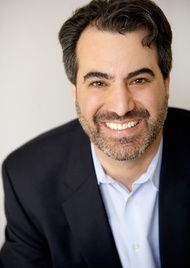By: Ron Pernick

We are just weeks away from the U.S. mid-term elections and the political B.S.-meter is red hot. It's not surprising or unexpected -- inflammatory rhetoric, last-minute "gotcha" accusations, and TV commercial-peddled nonsense is part of the American political experience, but it drowns out a much more important issue facing our nation. If the U.S. is going to be a leader in the race for clean-tech innovation and the resulting economic rewards, it needs to act fast - and it must cross ideological boundaries. A few years ago, former CIA director James Woolsey called for an unlikely coalition of "tree huggers, do-gooders, sod-busters, cheap hawks, and evangelicals" to move clean-tech initiatives forward. I believe that such a coalition is more important than ever if the U.S. is going to play a central role in the rise of clean tech. But is that possible in such a polarized environment? Perhaps so. In our just-released Clean Tech Job Trends 2010 report, we highlight how clean energy continues to fuel the plans of many cities, states, investors, and companies as they look for the next wave of innovation and growth. The good news is that U.S. states and cities are seriously competing for the three million and growing global clean-energy jobs. Our report finds that the San Francisco, Los Angeles, Boston, and New York metro areas lead the pack in clean-tech job creation, ranking first through fourth respectively. But it's not just an East Coast- West Coast story. Denver places fifth, Houston eighth, and Chicago ninth in our annual ranking of the top metro regions for clean-tech job activity. At the annual IEDC economic development conference in Columbus, Ohio, which I attended in late September, the clean-tech-as-economic- recovery-tool theme was highly palpable. Ohio State University president E. Gordon Gee talked about how Columbus had worked out a deal to attract CODA Automotive to build next-generation batteries. The CODA plant, assuming plans move forward, could create up to 1,000 high-paying jobs by 2015. An economic development official from Louisiana told me more about the state's clean-tech plans, and the recent announcement by Blade Dynamics, American Superconductor, and Dow Chemical to begin manufacturing in New Orleans and similarly bring hundreds of jobs to the Bayou state. I heard many other similar success stories from around the U.S. during the three days I was at the event. This from-the-heartland clean-tech renaissance was also noted during the event's final panel, where some of the nation's top site selection firms were assembled on stage. One panelist called clean energy the next "100-year opportunity." There was a strong no-nonsense belief that building, developing, and installing clean energy and green infrastructure was changing the game for cities and states across the nation - and was becoming a central theme for economic development. When the audience was queried by one of the panelists regarding how many of their cities or states had been approached regarding high- speed rail in their region, more than half of the audience raised its hands. This meteoric rise in awareness and activity is happening for good reason. As our annual compensation survey co-produced with compensation-data specialist PayScale shows, current median pay levels are high for a range of clean-tech jobs, from entry-level insulation worker ($33,600) and solar-energy systems installer ($37,700) to smart-grid embedded systems engineer ($76,500) and senior electric vehicle mechanical engineers ($91,500). But the race is heating up globally - and other nations are moving forward far more rapidly than the U.S. In the past five years, China has gone from clean-energy neophyte to global clean-energy powerhouse. Our research shows that China is now home to six of the top 10 global clean-tech pure-play employers, up from just three a year earlier. Clean-energy investments in China reached $34.6 billion last year, more than any other country and almost double the U.S. investment of $18.6 billion, according to a Pew Environment Group report, Who's Winning the Clean Energy Race. China has become "the" country to watch, and ignoring China's clean-tech ambitions and activities puts one's own clean-tech initiatives at great risk. Moving forward, we need to build a coalition of Democrats and Republicans, Tea Baggers and Progressives, Christians and Muslims, the youth and elderly. Yes, we face considerable ideological divides on many issues, but getting the clean-tech build out right is critical to all of our collective futures. In California, for example, Republican Governor Schwarzenegger, Republican and Democratic gubernatorial candidates Whitman and Brown, and the state's Public Utility Commission all oppose Proposition 23, which would overturn that state's landmark greenhouse emissions law. If Proposition 23 passes, many on both sides of the political aisle believe it would cripple California's burgeoning clean-energy industry and the 500,000 jobs that come with it. In Clean Tech Job Trends 2010 we highlight five key actions that we think can help any nation in its fight for clean-tech leadership. These include aggressive national renewable portfolio standards; the enforcement of robust efficiency, fuel, and emissions standards; and the establishment of new financing mechanisms such as green banks and loan guarantees. The race for clean-tech leadership is well underway. Let's hope that Woolsey was right: that the U.S. can build a strong and unlikely coalition to tackle the biggest economic opportunity of our time - and that our elected leaders will aggressively support a clean-tech build out and the jobs that come with them. Time is running out. ------- Ron Pernick is cofounder and managing director of Clean Edge and coauthor of The Clean Tech Revolution. To download Clean Tech Job Trends 2010, click here.

